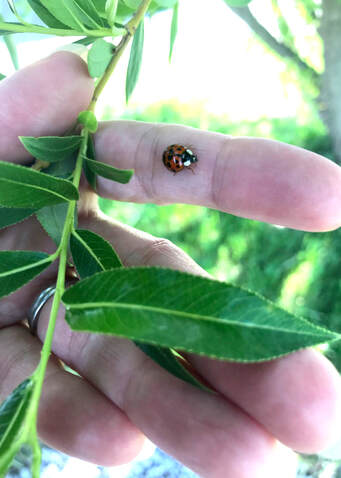 By Caroline Welfare Opinions Editor Earth Day there are 24 hours each spring when everybody is reminded to keep good habits and conserve energy. But our leaders don’t do a good enough job of telling us why we should care or what we should do. How are all animals important in the great circle of life? How will the scars we leave now come back to bite us later? Yes, it’s important to turn off the lights when we leave the house because it saves energy, and overuse of resources is interfering with the planet’s natural patterns, but with more and more of our lives spent online, it becomes easier to question why we need to do this. Beyond that, the lack of communicating and spreading environmental awareness is making people unaware of what to do when the unwanted side effects of woodland creatures are thrust into their faces. The lack of information can also lead people into potentially dangerous situations. Who hasn’t heard their parents complain about the raccoons getting into the trash? Or pigeons (and seagulls… and crows…) trying to steal their food? More and more wild animals are getting pushed into the cities, and are adapting to survive. And while it’s great to see more of them surviving (coyotes have been seen looking both ways before crossing the street), it also means that we are being confronted with new problems, namely, aggressive animals, pests carrying diseases, gardens getting eaten, raccoons that can open trash cans, and predators capable of injuring our pets. However, there are some other considerably worse side effects of being in close quarters with wild animals. Sometimes the consequences of not respecting them has something to do with eating something or being eaten. CBS news recently released an article about people getting sick and dying from eating a delicacy in Zanzibar: sea turtle meat. Not only is this sad for the sea turtles, it’s also a miserable thing to go through as the consumer, as the list of symptoms is “all of them”. People being unaware of these sorts of dangers can get hurt, as shown in the more extreme example of the early 1900s Maneater of Champawat; an injured tigress that claimed an estimated 436 human lives. It was finally stopped in India in 1907 by famed tiger hunter and conservationist Jim Corbett, the India Times said. In the book No Beast So Fierce, it is explained that the tigress had been maimed by a poacher’s bullet early in life, and was left unable to hunt its usual prey. As the East India Company pushed farther into the forests, its encounters with humans became more frequent, with us becoming its main food source. What stings the most is that both of these sufferings were entirely avoidable, if people had been responsible in their resource use and not tested their luck with a questionable delicacy. While those are somewhat (actually, they are) very unpleasant examples, their message rings true: People need to know and respect the boundaries of nature, for our safety, and everyone else’s. Earth Day is a prime opportunity to remind ourselves of what we can do to help, but what we do on Earth Day should carry over into every other day of the year. There is a reason that the image of a quiet mountaintop with a cool breeze and a warm sun nurturing blooming flowers is an idyllic image in our minds, and the day that we forget that, we have to protect that for ourselves and our future is a dark, scary day indeed.
0 Comments
Leave a Reply. |
Editors:Editor-in-Chief: Archives
May 2024
Categories |
 RSS Feed
RSS Feed